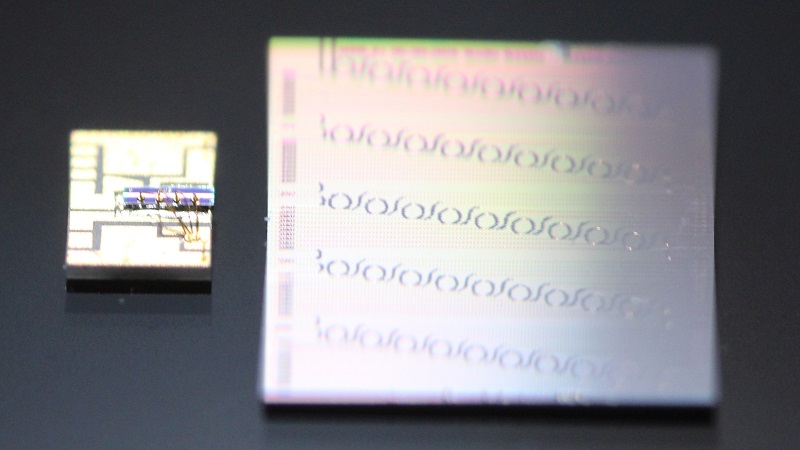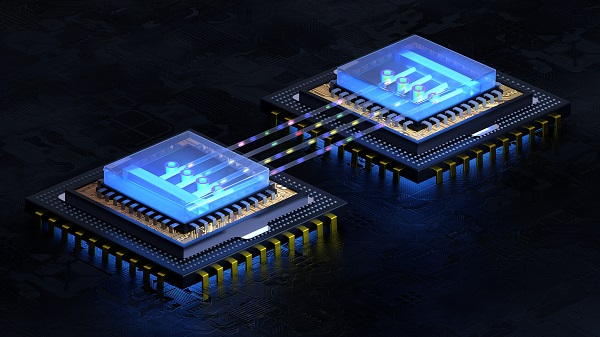Laser technology startup Enlightra has collaborated with DESY Hamburg to develop comb lasers that are more stable and efficient by design. The work demonstrated microresonators with programmable synthetic reflection, providing tailored injection feedback to the driving laser. The technology is a marked improvement compared to conventional self-injection locking, and can be produced using standard lithographic production.
Comb lasers are sources of multiple colors with equidistant spacing ranging from 100 GHz to 1 THz. The technology is highly valuable for optical communications to achieve the data necessary of AI applications.

The key components of Enlightra's laser comb. A conventional distributed feedback laser (left). Enlightra’s patented photonic integrated circuit capable of producing hundreds of wavelengths from a single laser (right). Courtesy of Enlightra.
One of the key aspects of a comb laser’s usefulness is its color purity. While lasers may seem like they have very pure color, for the most part, the beam is made up of many different shades of very similar colors. In the case of applications such as optical communications, it is desirable to have a laser that emits many different, pure colors. This is where comb lasers come in.
To improve purity for comb lasers, self-injection locking has been the standard method. The method uses ring resonators to filter out noise. Through Rayleigh backscattering, light bounces off of random imperfections within the ring and is sent back to the laser to do the injection locking.
“The problem with relying on random imperfections is that they can depend on the color and that they are not very strong,” said John Jost, cofounder of Enlightra and one of the authors of the paper. “With some limits, you want to send more light back to the laser, as this helps a lot with the injection locking.”
One of the key advancements of this research was engineering how the light scatters backward within the ring resonator. This was achieved by engineering the inner surface of a ring with a pattern that strongly scattered only one particular color. As the light goes around the ring, it feels the pattern and enables more light to be sent back for injection locking than it typically could, Jost told Photonics Media.
“This greatly improved the injection locking,” Jost said.

Enlightra’s comb laser supports integrated light sources for optical I/O solutions and distributed computing and memory architectures. Courtesy of Ethan Beaney.
The authors conducted various tests with different customized nanostructured ring resonators. They used a semiconductor laser diode butt-coupled to the photonic chip with the ring resonator. The technology was demonstrated in the C-Band but works equally well in all the telecommunications bands. The actual resonator was built in an integrated photonic chip with silicon nitride photonic crystal ring resonators, embedded in silica cladding.
“The photonic integrated circuits used in this work were fabricated at industrial foundries, so the technology is already ready to scale,” Jost said. “The ability to engineer the scattering of the light opens up a whole new door for more advanced designs that will allow us to tailor to our needs the comb laser spectrum in ways before not thought possible.”
The laser can be incorporated with a broad variety of photonic integrated circuits. For example, it could support fast optical I/O units or optical field-programmable gate arrays. The technology will be beneficial for data intensive applications, such as generative AI, and novel disaggregated computer and memory architectures.
According to Jost, he and his team already have more ideas than they can possibly try.
The research was published in Nature Photonics (www.doi.org/10.1038/s41566-023-01367-x).